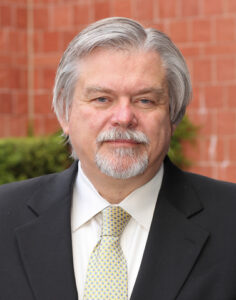LOS ANGELES– Children with sickle cell anemia are vulnerable to serious infections and stroke, but many do not receive the preventative care that could help them stay healthier for longer, a Children’s Hospital Los Angeles study found.
To assess the quality of preventative care received by children with sickle cell anemia, a team of investigators led by CHLA researchers examined how many children met two nationally endorsed quality standards. The researchers measured how many young children with sickle cell anemia received adequate preventative antibiotics to prevent infection and if children and adolescents with sickle cell anemia received annual brain ultrasounds to assess their stroke risk.

“What we found, unfortunately, was not what we’d hoped for,” says Ashaunta Anderson, MD, MPH, MSHS, Pediatrician at Children’s Hospital Los Angeles, who led the study. When the CHLA researchers and their collaborators compared Medicaid claims data from California and Georgia from 2010 to 2019, they found that only about 20% of children from 3 months to 5 years old with sickle cell anemia received preventative antibiotics in a given year, while about half of children and adolescents between the ages of 2 to 15 received an annual transcranial Doppler ultrasound. Twice-daily doses of antibiotics, given consistently, can protect young children with sickle cell anemia from developing serious infections. Children and adolescents with abnormal ultrasounds have a higher-than-normal risk of stroke, but once identified, their risk can be significantly reduced by receiving regular blood transfusions. The research was published in the journal Pediatrics.
About 100,000 people in the United States have sickle cell anemia, including approximately 1 out of every 400 African-Americans and about 1 in 19,000 Latinos. This chronic, genetic disease distorts the doughnut-shaped red blood cells that carry oxygen in blood into sickle shapes, leading them to clump in vessels and block blood flow to organs. These acutely painful episodes in children can lead to complications, including joint pain, infections, organ damage and stroke.
“We have a long history of treating patients in our Sickle Cell Disease Program at CHLA,” says Thomas Coates, MD, Section Head, Hematology and study co-author. “We provide specialist care and access to clinical trials. We focus on developing innovations in safer care, such as stroke prevention. We also provide practical support for patients’ families, such as help with transportation to appointments to make it easier for them to get their children consistent care.”
Children with private insurance generally meet the standards for preventative care, but because of health care disparities, the quality of care received by children from low-income families insured by Medicaid varies by state and can depend on whether the child’s family lives in an urban or a rural area. Children with sickle cell anemia were more likely to receive antibiotics if they lived in rural Georgia than if they lived in a city. Trends in the data also suggested that patients had a greater chance of receiving preventative antibiotics if their provider was a specialist—a pediatric hematologist—instead of their general pediatrician.
As patients got older, they were less likely to receive their annual scan for stroke risk. However, the percentage of children getting scanned for stroke overall increased during the years of the study, which Dr. Anderson credits to growing data collection efforts by states leading to more awareness.
“A reason why these quality standards are not being met could be lack of information,” says Dr. Anderson. “Providers may be unfamiliar with the guidelines. Patients and families may not know the importance of twice-daily antibiotics and getting annual scans for stroke risk up to age 16.” Patients may lack access to hospitals and clinics that can perform and interpret this kind of ultrasound. Refilling the penicillin prescription every two weeks can be challenging if a family lacks transportation or money.
“We are encouraged that these kinds of measurements can be tracked in every state in the country,” Dr. Anderson says. “We can start to do quality improvement programs in every clinic and every hospital, starting with these two measures, in order to deliver better care for children with sickle cell anemia.”
The study was funded by the National Center for Advancing Translational Science (NCATS) of the U.S. National Institutes of Health (grant UL1TR001855). Sickle Cell Data Collection team contributions from California and Georgia were supported by a cooperative agreement from the Centers for Disease Control and Prevention (CDC-RFA-DD20-2003, Sickle Cell Data Collection Program).
Other contributors included: Wendy J. Mack, PhD, of the Keck School of Medicine of USC; Sophia S. Horiuchi, PhD, and Susan Paulukonis, MA, MPH, of Tracking California; Mei Zhou, MS, and Angela B. Snyder, PhD, MPH, of Georgia State University; Jason N. Doctor, PhD, of USC; Michele Kipke, PhD, of Children’s Hospital Los Angeles; and Gary Freed, MD, MPH, of the University of Michigan Medical School.


